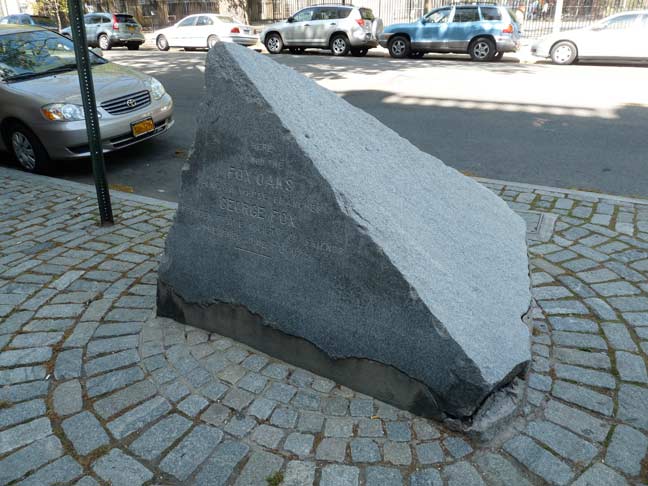Flushing’s history in the colonial era was closely intertwined with plants. William Prince established a commercial plant farm, or nursery, in western Flushing in 1737 along Flushing Bay. He first limited his business to apple, plum, pear and other fruit and flowering trees, and later expanded to shade and ornamental trees. After Prince’s business slumped during the Revolutionary war, he gained ground again and by 1789, President Washington had heard of him, and accompanied by Vice President Adams, paid a visit. According to accounts, though he seemed unimpressed with the gardens, he purchased a fruit tree.
The Quakers, which established a tenuous foothold in Flushing with Englishman John Bowne in the mid-1650s, were subject to official harassment by New Netherland’s director general Peter Stuyvesant; Bowne was hauled back to Holland for a time to answer for his ‘crimes.’ Stuyvesant’s attitude later eased, and was rendered null in 1664 when the British claimed New Netherland and the Dutch, with no stomach for war, acceded.
A stone marker across Bowne Street from the Bowne House, carved into a rough pyramid, reads: “Here stood the Fox Oaks, beneath whose branches George Fox, founder of the Society of Friends, preached June 7, 1672.” Bowne Street is still crowned by oaks.
10/14/14

